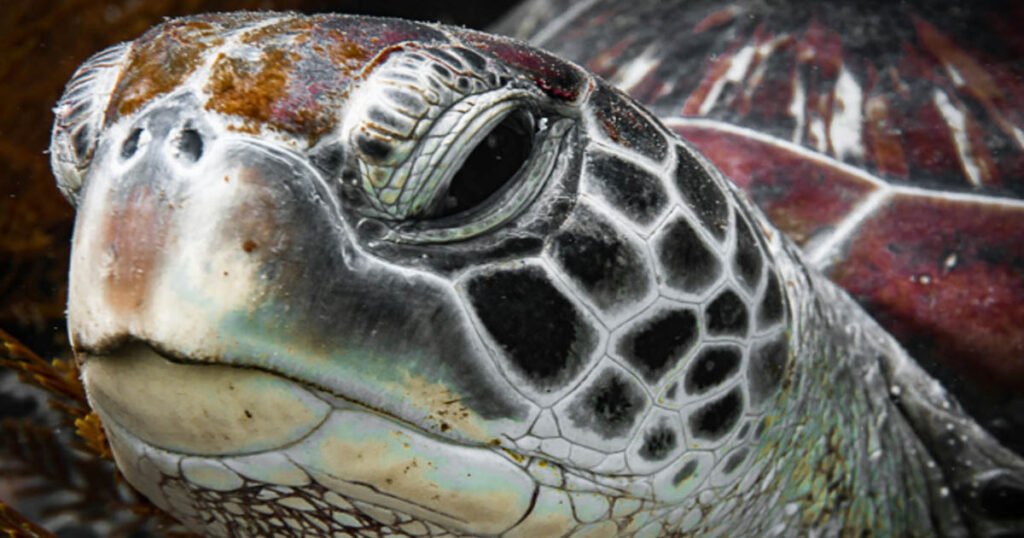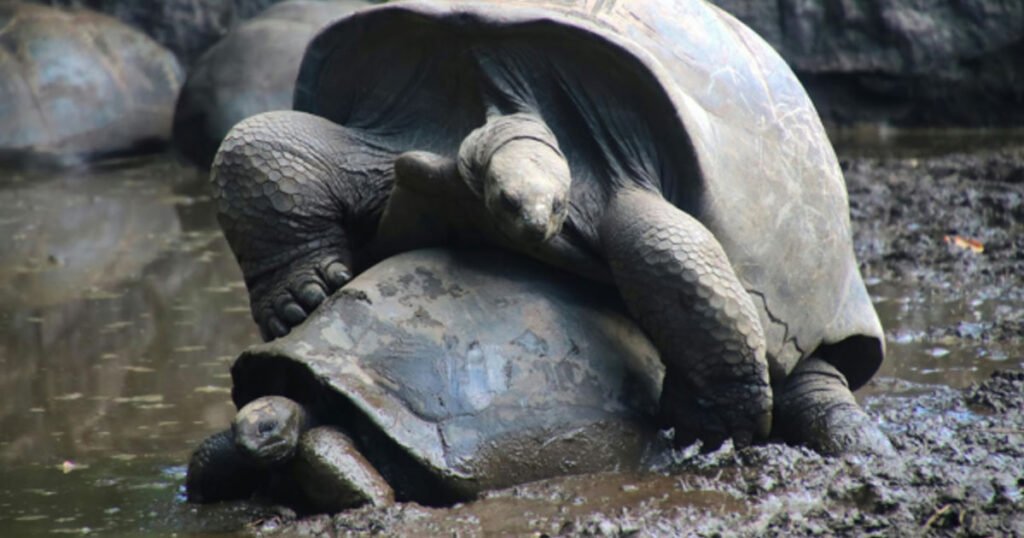Little turtles can be funny, but that’s what makes them special and cute. Turtles’ mouths are unique and small, making them look a bit like bird beaks. Some people may wonder do turtles have beaks.
Yes is the short answer! There are beaks on turtles and tortoises. Turtles come in many sizes and kinds, and each species’ beak is used for a different thing.
Carnivorous turtles, for example, have a much sharper beak and use it to successfully grab and kill their prey, but herbivorous turtles have a flatter beak that is ideal for crushing and flattening plants for eating.
Turtles don’t have teeth, so they eat with their beaks. Because of this, a turtle’s beak needs to be kept in great shape and may need to be trimmed every so often.
Table of Contents
Do Turtles Have Beaks?

Turtles are some of the coolest creatures you’ll ever come across, and one thing that makes them super interesting is their beaks. Maybe you want to know, “Do turtles have beaks?” Well, the answer is both yes and no! Let’s dive into it. Imagine you’re at the beach, watching a sea turtle gently gliding through the water.
These ocean-dwelling turtles are the ones that often come to mind when we think of turtles with beaks. Do sea turtles have beaks? Yes, sea turtles do indeed have beaks! Their beaks are made of tough, hard material, almost like the beak of a bird.
This beak is super helpful for them because it helps them chow down on their favorite foods like jellyfish, seaweed, and even small crabs. It’s like having a built-in utensil for eating all their underwater food!
So, whether a turtle has a beak or a snout relies on where it lives and what it likes to eat. If it’s a sea turtle cruising through the ocean, chances are it’s carrying a sturdy beak for munching on marine delicacies.
But if it’s a freshwater turtle chilling in a pond or river, it’s more likely to have a snout for nabbing its food. Either way, turtles are pretty amazing creatures with their unique adaptations for living in their habitats.
Do All Turtles Have Beaks?
Not all turtles have beaks! While some turtles, like sea turtles, have beaks, others have different mouth shapes. For example, freshwater turtles often have snouts instead of beaks. These snouts are long and pointed, helping them grab onto their food, like fish, insects, and plants. Snapping turtles are a good example of this—they use their strong jaws and sharp mouths to catch prey.
Additionally, box turtles have beaks suited for munching on fruits, veggies, and small critters. So, whether it’s a beak, a snout, or another mouth adaptation, turtles have unique ways of eating based on their species and environment.
Do Baby Turtles Have Beaks?

Yes, baby turtles do have beaks. When turtles hatch from their eggs, they already have their characteristic beak or snout, based on their species. This beak is essential for them to start feeding soon after hatching.
Baby turtles generally feed on small insects, plants, or other tiny organisms found in their environment, and their beaks are adapted to help them grab and consume these foods. As the baby turtles grow and mature, their beaks may also develop and change slightly, but the general structure is present from the beginning. So, whether they’re newborn hatchlings or full-grown adults, turtles depend on their beaks to eat and survive in their habitats.
Why Do Turtles Have Beaks?
Turtles have beaks because they need specialized tools for eating and living in their environments. The shape and structure of a turtle’s beak are adapted to its food and lifestyle. For example, sea turtles have strong, tough beaks that help them slice through slippery jellyfish and seaweed underwater.
This beak design is great for their marine diet. Freshwater turtles, on the other hand, might have snouts or sharp beak-like mouths that help them catch fish, insects, and plants in ponds or rivers. The beak helps turtles grab and consume their food efficiently, making it easier for them to live and thrive in their habitats.
Additionally, the beak can also serve as a defense device for some turtles, like snapping turtles, which use their powerful jaws and sharp beaks to protect themselves from predators. So, the beak is not just a tool for eating but also plays an important role in a turtle’s ability to find food and stay safe in its environment.
Different Kinds of Turtle Beaks

Turtles are amazing creatures, and they come in all shapes and sizes, each with its special beak! Let’s take a closer look at some of these amazing turtle beaks.
First up, we have the sea turtles. These beautiful creatures have strong, tough beaks that help them chomp through their favorite snacks, like jellyfish and seaweed. Imagine having a built-in tool for snacking on underwater treats!
Then, there are the freshwater turtles, like the red-eared sliders and painted turtles you might find in ponds or lakes. Instead of a hard beak, these turtles have snouts—long, pointy noses that they use to grab onto their food, whether it’s fish, insects, or plants. Snapping turtles take it a step further with their powerful jaws and sharp beak-like mouths, perfect for catching prey and protecting themselves if needed.
Softshell turtles, true to their name, have soft shells and elongated mouths that they use to sneak up on their meals.
Box turtles, on the other hand, have beaks that are great for munching on fruits, veggies, and even small critters. And let’s not forget about the leatherback sea turtle, which has a unique throat structure that acts like spiky teeth to help it swallow slippery food like jellyfish. Whether they’re slicing through the ocean or prowling in freshwater areas, turtles sure know how to use their beaks—or snouts—to thrive in their environments.
Each type of turtle has its special beak, perfectly adapted to its lifestyle and food. So, the next time you spot a turtle, take a moment to admire its fantastic beak and all the amazing things it can do!
Turtle Beaks: Function and Adaptation

Turtle beaks are like special tools that help turtles eat and live in their homes. Just like we use forks and spoons to eat, turtles use their beaks to grab and munch on their food. Each type of turtle has a mouth that’s just right for what it likes to eat and where it lives. For example, sea turtles have strong, tough beaks that help them slice through slippery jellyfish and crunchy seaweed in the water. They’re like the superheroes of the sea, with their beaks as their trusty sidekicks!
On the other hand, freshwater turtles, like the ones you might see in ponds or rivers, have snouts or sharp beak-like mouths that they use to catch fish, insects, and plants. It’s like having a built-in fishing stick! Some turtles, like snapping turtles, even use their powerful jaws and sharp beaks to protect themselves from danger. So, whether they’re gliding through the waves or paddling in waters, turtles rely on their amazing beaks to eat, stay safe, and keep on being awesome creatures of nature!
Read More: Do Turtles Have Good Eyesight: A Comprehensive Guide
Conclusion
Turtles are incredible creatures with a variety of beaks or snouts that help them eat and live in different settings. Some turtles, like sea turtles, have strong beaks for munching on ocean snacks like jellyfish, while others, like freshwater turtles, have snouts for catching fish and insects in ponds and rivers. Whether it’s a beak, a nose, or another special mouth adaptation, turtles use these tools to find food and stay safe in their homes. So, the next time you see a turtle, take a moment to admire its fantastic beak and all the amazing things it can do!
